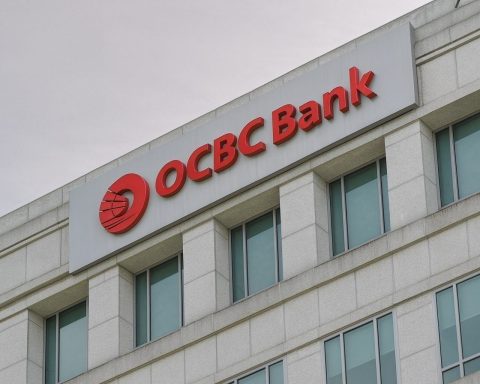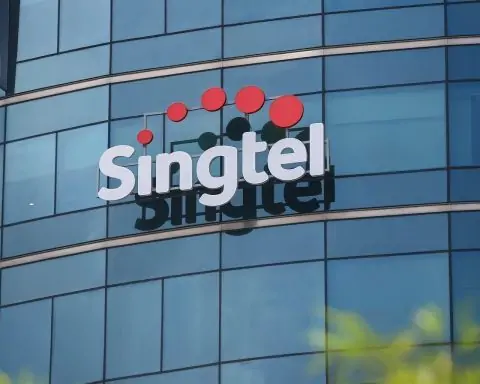- OpenAI launched GPT-5 on Aug. 7, 2025, touting expert-level capabilities and 700 million ChatGPT users.
- On Aug. 7, 2025, the U.S. Commerce Department began licensing Nvidia to export its H20 AI chips to China, reversing a ban and potentially restoring access to a huge market.
- AMD shares fell 5.1% and SMCI dropped 18.2% after Q2 data-center results disappointed, with AMD data-center revenue rising 14% to $3.2 billion but under forecasts.
- Nvidia and Broadcom hit all-time highs and notched record closes as the AI chip rally regained momentum.
- Meta Platforms raised $29 billion for AI data centers, with about $26 billion in debt from PIMCO and $3 billion in equity from Blue Owl Capital.
- Alphabet, Meta, Amazon, and Microsoft are on pace to spend nearly $400 billion this fiscal year on data centers and AI infrastructure.
- Palantir Technologies surged nearly 9% on Aug. 5 after raising its full-year revenue forecast for Q2, and U.S. government sales rose 53% to $426 million last quarter.
- SoftBank Group posted a net profit of ¥421.8 billion (~$2.87 billion) for April–June and has pledged about $30 billion to OpenAI plus leading the $500 billion Stargate data-center project.
- At the World Robot Conference in Beijing on Aug. 8, China’s robotics rally pushed robotics stocks up about 27% year-to-date, with Zhongda Dali up 191% and Shanhe Intelligence up 130% in 2025.
- The Nasdaq Composite reached its 18th record high of 2025 on Aug. 8, driven by AI and tech shares.
Global markets are riding an AI wave in early August 2025, with artificial intelligence stocks and tech giants hitting record highs amid blockbuster earnings, product launches, and massive investments. From Wall Street to Tokyo and Beijing, investors are piling into AI-focused companies – but a few cautionary voices warn the rally comes with sky-high expectations. In this two-day roundup (Aug. 8–9, 2025), we cover all the major AI stock news: surging chipmakers and cloud titans, a landmark AI model launch, earnings surprises, regulatory twists, and analyst insights driving the market.
Semiconductors & AI Hardware: High Hopes, Harsh Reality Checks
Chip stocks have been at the epicenter of the AI boom, but recent earnings delivered a mixed message. Advanced Micro Devices (AMD) and server-maker Super Micro Computer (SMCI) – both big “AI plays” – tumbled after underwhelming data-center results, shaking confidence in their AI growth narratives [1] [2]. AMD’s stock slid 5.1%, while SMCI plummeted 18.2% after reporting that data-center sales missed expectations. AMD’s data-center revenue rose 14% to $3.2 billion in Q2, slightly below forecasts, and paled next to Nvidia’s 73% surge in the same segment [3]. “[AMD’s] AI outlook did not show the sort of upside some investors were looking for,” Jefferies analysts noted bluntly [4]. CEO Lisa Su acknowledged U.S. export curbs on its MI308 AI chips to China hurt sales, with AI chip revenue actually declining year-on-year [5]. HSBC warned any lift of the ban would have a “more muted” benefit than markets hoped [6], underscoring how geopolitics are capping near-term growth.
For SMCI, a leading AI server supplier often seen as a proxy for Nvidia, results were even more disappointing. The company missed quarterly estimates and hinted it’s losing market share to Dell and HPE in the red-hot AI server market [7]. Execution missteps and Nvidia chip supply delays squeezed margins, forcing SMCI to cut its guidance. “Any weakness in the high-expectation AI space tends to spark sharp investor backlash,” analysts cautioned after more than $6 billion of SMCI’s market value evaporated overnight [8] [9]. Still, J.P. Morgan analysts reiterated that AI remains the “preeminent driver of sales growth,” noting over 70% of SMCI’s revenue now comes from AI platforms [10] [11]. SMCI’s CEO struck an optimistic tone that improving chip supply “will help us grow better” going forward [12].
Despite these hiccups, the broader chip rally quickly regained steam. By Aug. 7, investors poured back into semiconductor names, betting on policy relief and sustained AI demand. Nvidia and Broadcom – the two largest AI chip makers – each hit all-time highs, rising nearly 1% and notching record closes [13]. AMD rebounded about 5%, and even TSMC jumped 5%, amid optimism that looming 100% U.S. chip tariffs would exempt companies investing in American plants [14]. In Washington, a major regulatory hurdle was lifted: the U.S. Commerce Department began granting licenses for Nvidia to export its advanced “H20” AI chips to China [15]. This reverses an earlier ban and could restore access to a huge market for Nvidia. The company had warned the export curbs might slice $8 billion off its near-term sales [16], so the news sparked relief. Nvidia’s CEO Jensen Huang even met with President Donald Trump mid-week to press the case [17] – part of a high-level lobbying effort as the White House balances national security concerns with industry growth. “We’re looking forward to obtaining approvals to resume sales to China,” Nvidia said last month, signaling confidence that its lobbying would bear fruit [18]. Investors cheered the development, seeing it as removing a cloud over the AI chip leader’s outlook.
Big Tech & Cloud AI: $400 Billion Infrastructure Bets
As demand for AI computing explodes, tech titans are investing unprecedented sums in AI infrastructure. The four biggest players – Alphabet (Google), Meta (Facebook), Amazon, and Microsoft – are on pace to spend nearly $400 billion this fiscal year combined on data centers and other AI-related capital projects [19]. Recent moves on Aug. 7–8 underscored this “AI arms race” to build cloud supercomputers:
- Meta Platforms struck a massive financing deal for new AI data centers. The company tapped bond giant PIMCO and asset manager Blue Owl Capital to raise $29 billion for expanding its data center footprint in rural Louisiana [20]. PIMCO will provide about $26 billion in debt (likely via bonds) and Blue Owl $3 billion in equity [21] – a huge vote of confidence in Meta’s AI ambitions. The deal comes as Meta looks for partners to share its soaring AI infrastructure costs. Just last week, Meta said in a filing that it plans to offload ~$2 billion of existing data center assets as part of a co-development strategy to split the cost of generative AI facilities [22]. CEO Mark Zuckerberg has been explicit that Meta will spend “hundreds of billions of dollars” building out “massive” AI supercomputing hubs [23]. In fact, Meta is already planning multiple new mega–data centers codenamed “Prometheus” and “Hyperion” – the first coming online in 2026 at multi-gigawatt power scale [24]. This extraordinary build-out (effectively creating AI factories) shows how crucial AI is to Meta’s future, and why it’s leveraging external capital to get there.
- Alphabet, Amazon, and Microsoft are no less aggressive. Google and AWS have likewise boosted spending on cutting-edge AI data centers and custom AI chips, while Microsoft – which backs OpenAI – is pouring billions into hosting services like ChatGPT. Even hardware firms are joining in: Japan’s SoftBank Group (better known as a tech investor) revealed it’s leading the financing for “Stargate,” a $500 billion U.S. AI data-center project, and is committing a jaw-dropping $30 billion into OpenAI itself [25] [26]. These mammoth investments, as Reuters calls them, show that cloud AI at scale requires cloud-scale money – and the biggest players are writing blank checks to maintain an edge.
Despite the hefty price tags, Wall Street is encouraging these spending sprees. Investors see long-term payoff in securing AI capacity, with many viewing AI infrastructure as the new essential utility (analogous to electricity). As evidence of optimism, suppliers to these mega projects are booming: equipment makers like ASML and chip foundries like TSMC report robust orders thanks to the AI build-out, even as they navigate geopolitical uncertainties [27]. “Big Tech’s AI spending spree just got Wall Street’s blessing,” noted one analyst, pointing out that Microsoft and Meta shares surged after revealing their huge capex plans, hitting near $4 trillion and $2 trillion market caps respectively [28] [29]. The market seems convinced that all this capacity will be monetized – eventually.
Enterprise AI Software: Palantir’s Soaring Demand vs. Valuation Jitters
The AI gold rush isn’t just hardware – software companies enabling AI are also reaping rewards. The standout is Palantir Technologies (PLTR), a data analytics firm turned AI platform provider, which delivered blowout Q2 results and raised its outlook amid “soaring” demand. On Aug. 5, Palantir hiked its full-year revenue forecast for the second time this year, citing sustained appetite for its AI-powered solutions from both government and commercial clients [30]. The news sent Palantir’s stock up nearly 9% in one day [31], capping a stunning run – the stock has doubled in 2025, making it the S&P 500’s top performer, and has surged over 600% in the past three years [32]. “Palantir isn’t just a government vendor anymore – it’s becoming an indispensable partner for enterprises in the AI revolution,” said Saxo Bank’s head of investment strategy, praising the company’s expansion into broader markets [33]. Wedbush Securities analysts went so far as to predict Palantir could hit a $1 trillion market cap in the next few years, riding the AI wave (it’s about $380 billion now) [34]. Such bullishness reflects a broader Wall Street theme: AI-oriented software firms are viewed as having tremendous runway as businesses embrace generative AI, predictive analytics, and automation tools.
Palantir’s results back up the hype. The company revealed U.S. government sales jumped 53% last quarter to $426 million, helping quarterly revenue reach $1 billion for the first time [35]. New defense contracts – including a U.S. Army program that might spend up to $10 billion on Palantir’s AI over a decade – are a major growth driver [36]. “Palantir’s staggering growth is showing no signs of slowing… and its ability to grow at scale has been underestimated by a large cohort of the market,” noted Matt Britzman, senior equity analyst at Hargreaves Lansdown, as the company racks up clients and cash flows [37]. At least 11 brokerages have raised their price targets following the earnings beat [38].
Yet, the frenzy around AI software is also raising valuation red flags. At current levels, Palantir trades at over 200× forward earnings, by far the priciest multiple in the S&P 500 [39]. (For comparison, even AI chip giant Nvidia trades around 35× [40].) “Despite [Palantir’s] robust competitive advantages… we believe this is turning into a difficult-to-justify valuation story,” cautioned Morningstar analysts, who worry that investors may be overshooting fundamentals [41]. Palantir itself acknowledged that expenses will rise in coming quarters as it aggressively hires AI talent – at the same time Big Tech is in an arms race to poach those same engineers, driving up costs [42]. This mirrors a broader trend: while demand and revenue are booming, AI companies face steep costs (skilled talent, enormous cloud bills), so profit leverage remains uncertain.
Even so, optimism in enterprise tech remains sky-high. Many software CEOs are calling this the dawn of a new cycle. Oracle co-founder Larry Ellison recently proclaimed, “AI is a much bigger deal than the Industrial Revolution, electricity, and everything that’s come before,” adding that customer demand is “almost insatiable” for AI products [43]. Microsoft, Google, Salesforce, and others likewise touted multi-billion-dollar AI opportunities in their recent earnings calls. This executive exuberance – coupled with real growth numbers – has kept investors pouring into AI software names. Smaller AI-focused firms in areas from fintech to cybersecurity are also attracting speculative inflows. The takeaway: the market is rewarding any company showing real traction in AI – but it’s also quick to punish those that don’t live up to the hype.
Global Highlights: SoftBank’s Big Payday and China’s Robot Rally
The AI fervor is truly global, lifting tech fortunes in Asia as well. In Japan, SoftBank Group – the famed tech conglomerate led by Masayoshi Son – just had a historic windfall. On Aug. 8, SoftBank shares soared over 13% to a record high in Tokyo after the company posted a blockbuster quarterly profit and trumpeted its AI-focused strategy [44] [45]. SoftBank reported a net profit of ¥421.8 billion (~$2.87 billion) for April–June, a huge swing from a loss a year earlier, and well above analyst expectations [46]. The earnings beat – driven by a rebound in SoftBank’s tech investment portfolio – vindicated Son’s aggressive pivot to AI. Management noted that market enthusiasm for AI has lifted valuations for many of SoftBank’s public and private holdings, which even improved the firm’s leverage ratios [47]. Indeed, SoftBank has gone “all-in” on AI this year, committing $30 billion to OpenAI (maker of ChatGPT) and leading the $500 billion “Stargate” U.S. data center project, among other bets [48]. These “mammoth investments” underscore SoftBank’s aim to be at the center of the AI revolution. As Macquarie analyst Paul Golding wrote, SoftBank’s results are “evidence of [its] quality diversified portfolio, strong underlying fundamentals, [and] secular AI tailwinds.” [49] Investors agreed – SoftBank’s one-day surge single-handedly pushed Japan’s Topix index above 3,000 points for the first time in history [50]. “Active investors scooped up SoftBank shares to beat the Topix’s gain,” noted Seiichi Suzuki, chief market analyst at Tokai Tokyo Research, as fund managers rushed to grab the big AI winner [51]. The rally provided a huge confidence boost to Asia’s tech market and showed how major AI bets can lift entire indices.
Over in China, an AI-driven “robotics rally” is in full swing. The 2025 World Robot Conference kicked off in Beijing on Aug. 8, shining a spotlight on the country’s booming automation sector. In the weeks leading up, China’s “robot concept” stocks have been on fire, as investors piled into anything related to AI and robotics. On average, Chinese robotics-related companies are up 27% year-to-date, with some skyrocketing far more [52]. For example, factory automation firms Zhongda Dali and Shanhe Intelligence have seen their shares surge 191% and 130% respectively in 2025 [53] – astonishing gains reflecting euphoria around the robotics theme. Dozens of Chinese robot makers issued bullish mid-year outlooks; at least 14 reported profit growth in the first half, and several former money-losers expect to swing to profitability this year thanks to red-hot demand for smart robots [54]. One industrial robotics supplier forecast its H1 net income will double from a year ago, exemplifying the real growth behind the hype [55]. The flurry of upbeat news, combined with the high-profile expo, has created a “feeding frenzy” in China’s markets for anything AI or automation-related. It mirrors the “AI bubble” atmosphere seen in U.S. tech stocks – though backed by tangible signs of sector growth on the ground.
Notably, robotics stocks globally are benefiting from the broader AI trend as well. In the U.S. and Europe, companies enabling physical automation – from industrial robot makers to AI vision system providers – have seen increased investor interest. For instance, Nvidia (which offers robotics development platforms) and automation leader ABB have both highlighted rising orders for AI-driven robots and factory automation tools [56]. While China’s rally is the most extreme case, it underscores a key point: AI isn’t just about software and chips – it’s also about smart machines transforming real-world industries. From warehouses to fast-food kitchens, investors are hunting the next breakout winners in the automation wave.
Investor Sentiment: Euphoria (with a Side of Caution)
Across the board, investor sentiment on AI remains overwhelmingly bullish as of early August. The market is awash in enthusiasm – evidenced by record stock prices, oversubscribed funding deals, and ever-higher analyst price targets. Big Tech executives are evangelizing AI as the future (with near-religious zeal, in Ellison’s case), and Wall Street research notes read like hyperbole. Many top AI stocks are at or near all-time highs – from Nvidia and Broadcom to Palantir and Salesforce – reflecting a FOMO-driven rush to gain exposure [57]. The Nasdaq Composite index notched yet another record high on Aug. 8, its 18th of the year, fueled largely by tech and AI-related shares [58] [59]. Apple, for example, jumped 4.2% Friday (its best week since 2020) after President Trump touted Apple’s new $100 billion U.S. investment commitment [60] – showing how even the hint of more AI and tech spending can lift stocks. In the IPO arena, new AI-linked listings are seeing explosive demand: this week Ambiq Micro, a small AI chipmaker, soared 61% in its trading debut, and cloud AI startup CoreWeave (backed by Nvidia) filed for an IPO aiming for a whopping ~$30 billion valuation [61]. M&A activity is heating up too, with both tech giants and private equity firms hunting for AI-driven targets (for instance, Blackstone’s recent multi-billion acquisition of an energy AI analytics firm was a notable deal). The theme is clear: money is chasing AI from every angle – public markets, venture capital, and corporate deal-making.
Yet, even in this exuberant climate, some seasoned voices are urging caution. The sharp tumbles in AMD and Super Micro following their earnings show that the market will punish hype if results don’t deliver [62]. The valuation debate around high-flyers like Palantir shows not everyone is willing to suspend disbelief on fundamentals [63] [64]. “Are we in the later innings of an AI hype cycle, or still just the early stages?” mused Jacob Mintz of Cabot Wealth, noting signs of froth such as call-option buying frenzies in speculative AI names and weakness in non-tech sectors [65]. His “spider sense” wonders if the AI trade has “become too easy” – a reminder that every market mania eventually faces a reality check [66]. Similarly, economics commentator Noah Smith pointed out that enterprise adoption of AI has lagged the consumer buzz, warning “business spending on AI… isn’t nearly enough to justify all the money being spent on AI data centers” so far [67]. These notes of skepticism haven’t slowed the momentum, but they suggest investors are at least debating how to separate true AI winners from a potential bubble.
Bottom line: the first week of August 2025 demonstrated that AI remains the defining theme on Wall Street and beyond. From trillion-dollar mega-caps to newly public startups, any company tied to artificial intelligence is in the spotlight and – for the most part – in the winner’s column. Even OpenAI made headlines by launching its next-gen GPT-5 model on Aug. 7, touting advanced capabilities for its 700 million ChatGPT users [68]. (CEO Sam Altman declared “GPT-5 is like asking a legitimate expert anything” [69] – a bold claim that encapsulates the tech’s rapid evolution.) Every fresh development – be it a breakthrough model, a big earnings beat, or a multi-billion investment – is another catalyst feeding the frenzy. As one analyst put it, demand for AI feels “insatiable” right now [70], and investors are determined not to miss out on what many call a once-in-a-generation revolution. For now, that wave continues to carry markets higher. The true test will come in the quarters ahead – can these companies sustain the torrid growth needed to justify their lofty valuations? In the meantime, the AI stock boom rolls on, fueled by optimism, momentum, and the transformative promise of artificial intelligence.
Sources:
- Reuters – SoftBank stock hits record high on AI push [71] [72]
- Reuters – U.S. grants Nvidia licenses to export AI chips to China [73] [74]
- Reuters – AMD & Super Micro plunge as AI server sales disappoint [75] [76]
- Reuters – Nasdaq records high as tech & AI stocks rally [77] [78]
- Reuters – Palantir shares surge on forecast hike, analysts split on value [79] [80]
- Reuters – Meta raises $29 B for AI data centers; Zuckerberg’s “hundreds of billions” pledge [81] [82]
- Reuters – OpenAI launches GPT-5, Big Tech’s $400 B capex spree in focus [83] [84]
- TS2/Finance – “AI Stocks Frenzy (Aug 7–8, 2025)” roundup for additional context [85] [86]
References
1. www.reuters.com, 2. www.reuters.com, 3. www.reuters.com, 4. www.reuters.com, 5. www.reuters.com, 6. www.reuters.com, 7. www.reuters.com, 8. www.reuters.com, 9. www.reuters.com, 10. www.reuters.com, 11. www.reuters.com, 12. www.reuters.com, 13. www.investopedia.com, 14. www.investopedia.com, 15. www.reuters.com, 16. www.reuters.com, 17. www.reuters.com, 18. www.investopedia.com, 19. www.reuters.com, 20. www.reuters.com, 21. www.reuters.com, 22. www.reuters.com, 23. www.reuters.com, 24. www.reuters.com, 25. ts2.tech, 26. ts2.tech, 27. ts2.tech, 28. www.svcp.com, 29. www.svcp.com, 30. www.reuters.com, 31. www.reuters.com, 32. www.reuters.com, 33. www.reuters.com, 34. www.reuters.com, 35. www.reuters.com, 36. www.reuters.com, 37. www.reuters.com, 38. www.reuters.com, 39. www.reuters.com, 40. www.reuters.com, 41. www.reuters.com, 42. www.reuters.com, 43. ts2.tech, 44. ts2.tech, 45. ts2.tech, 46. ts2.tech, 47. ts2.tech, 48. ts2.tech, 49. ts2.tech, 50. ts2.tech, 51. ts2.tech, 52. ts2.tech, 53. ts2.tech, 54. ts2.tech, 55. ts2.tech, 56. ts2.tech, 57. ts2.tech, 58. www.reuters.com, 59. www.reuters.com, 60. www.reuters.com, 61. ts2.tech, 62. ts2.tech, 63. www.reuters.com, 64. www.reuters.com, 65. ts2.tech, 66. ts2.tech, 67. www.reuters.com, 68. www.reuters.com, 69. www.reuters.com, 70. ts2.tech, 71. www.reuters.com, 72. ts2.tech, 73. www.reuters.com, 74. www.reuters.com, 75. www.reuters.com, 76. www.reuters.com, 77. www.reuters.com, 78. www.investopedia.com, 79. www.reuters.com, 80. www.reuters.com, 81. www.reuters.com, 82. www.reuters.com, 83. www.reuters.com, 84. www.reuters.com, 85. ts2.tech, 86. ts2.tech







